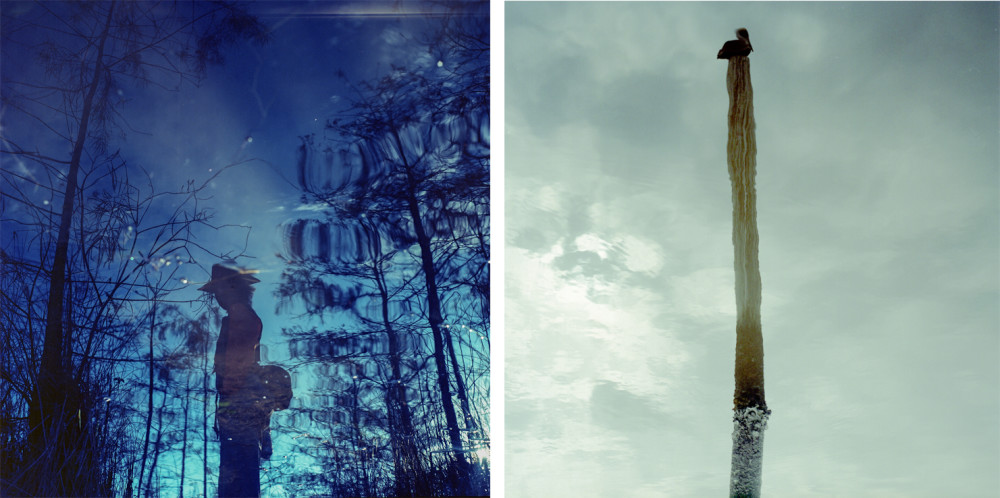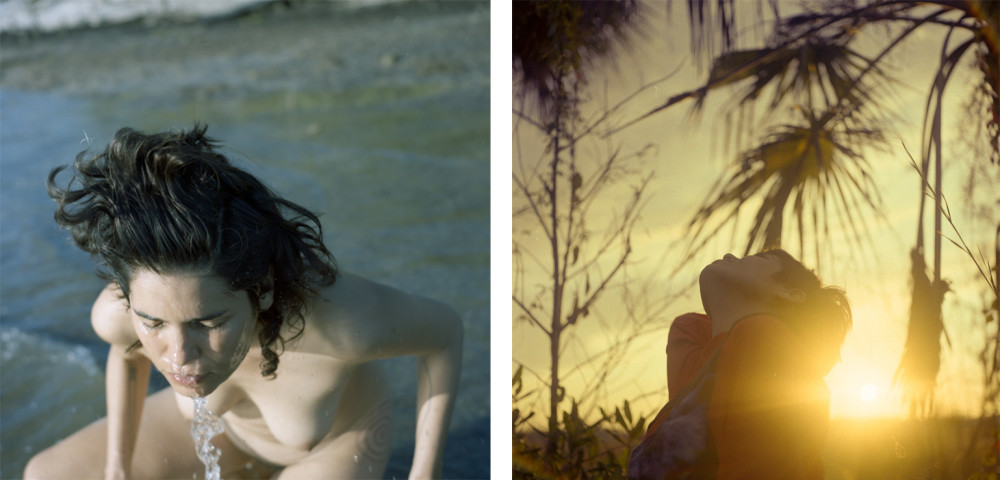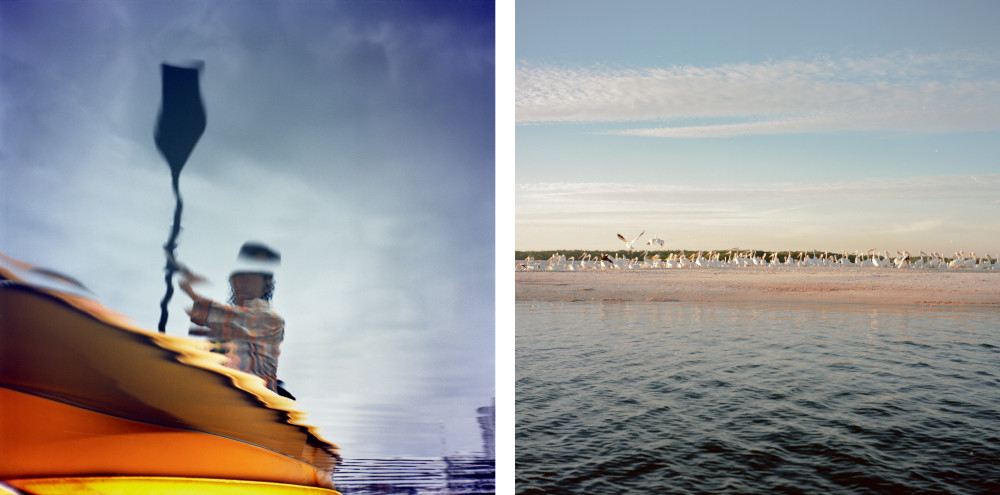Images above: ©Gesi Schilling (top left) Lostman's River, Gator Hook Trail, Big Cypress National Preserve, FL; (top right) Picnic Key, Picnic Key, Everglades National Park, FL; (bottom left) Clubhouse Beach, Bear Island, Big Cypress National Preserve, FL; (bottom right) Airpark Road, Ten Thousand Islands, Everglades National Park, FL. Courtesy of Robin Rice Gallery, New York.
The Robin Rice Gallery presented on April 22, Pelican Finn, an exhibition of photographs.
Pelican Finn, a reference to the subject’s name, broadly illustrates the relationship between individual and environment while specifically capturing a Cuban American woman’s relationship to the Florida Everglades, a world heritage site and the largest wetland on earth. Shooting through the intense and wild conditions inherent to the setting, Schilling creates a magical, dreamlike world that captures the untamed spirit of both the Everglades and Finn, who was introduced to the Everglades in flight from Cuba to the United States for the first time.
The exhibition brings together Schilling’s portrait, figurative, and landscape photography. For the series, she used a vintage Yashica twin-lens reflex (TLR) camera and 120 film, creating vivid, crisp, and colorful images. Vibrant greens and blues, pervasive in the aquatic landscape, saturate the work. Including a few images in black and white, Schilling cites Henri Cartier-Bresson and Robert Capa among her inspirations.
 Images above: ©Gesi Schilling (left) Gator Hook, Gator Hook Trail, Big Cypress National Preserve, FL; (right) Everglades City, Everglades City FL, 2015. Courtesy of Robin Rice Gallery, New York.
Images above: ©Gesi Schilling (left) Gator Hook, Gator Hook Trail, Big Cypress National Preserve, FL; (right) Everglades City, Everglades City FL, 2015. Courtesy of Robin Rice Gallery, New York.
In the invitation piece “Gator Hook,” Finn’s reflection cuts clearly through soft disturbances in the water’s surface, which mirrors the giant expanse of blue sky surrounded by blooming cypress trees. Wiry, untamed branches frame either side of her body. Her face disappears into the water, leaving only the outline of a cowboy hat and a hint of orange sleeve to distinguish her torso from the surrounding nature.
In another image “Loop Road” depicts Finn leaning backward into the sunrise. The sun glows through dark palm fronds, suffusing the image with warmth and enveloping her in yellow sky.
 Images above: ©Gesi Schilling (left) Chokoloskee Bay, Picnic Key, Everglades National Park, FL; (right) Loop Road, Monroe Station, Big Cypress National Preserve, FL. Courtesy of Robin Rice Gallery, New York.
Images above: ©Gesi Schilling (left) Chokoloskee Bay, Picnic Key, Everglades National Park, FL; (right) Loop Road, Monroe Station, Big Cypress National Preserve, FL. Courtesy of Robin Rice Gallery, New York.
The series was inspired, in part, by Michael Grunwald’s The Swamp: The Everglades, Florida, and the Politics of Paradise, which chronicles the destruction and posits the possible resurrection of the Everglades. Schilling manages to weigh the balance among newness, discovery, and optimism with the precariousness and uncertainty of nature and the threat of loss without slipping into the pedantic mode that too often accompanies an immigrant narrative, or falling prey to a conservationist’s zeal.
 Images above: ©Gesi Schilling (left) Florida Bay, Biscayne Bay, Everglades National Park, FL.2015; (right) White Pelicans, Ten Thousand Islands, Everglades National Park, FL. Courtesy of Robin Rice Gallery, New York.
Images above: ©Gesi Schilling (left) Florida Bay, Biscayne Bay, Everglades National Park, FL.2015; (right) White Pelicans, Ten Thousand Islands, Everglades National Park, FL. Courtesy of Robin Rice Gallery, New York.
.


